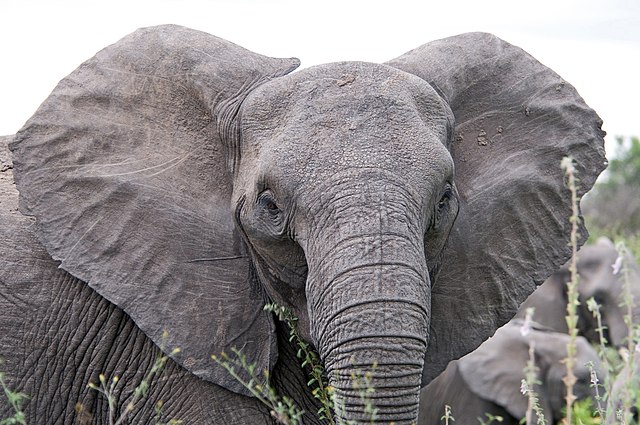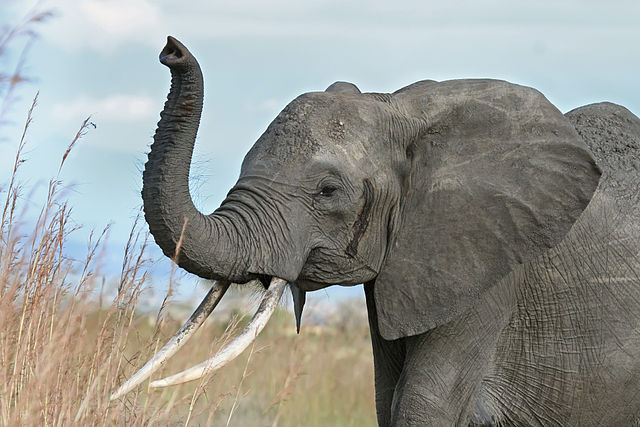In ethology, fission–fusion society is one in which the size and composition of the social group change as time passes and animals move throughout the environment; animals merge into a group (fusion)—e.g. sleeping in one place—or split (fission)—e.g. foraging in small groups during the day. For species that live in fission–fusion societies, group composition is a dynamic property. The change in composition, subgroup size, and dispersion of different groups are 3 main elements of a fission-fusion society.
Forest elephants socializing at a clearing
Elephants are the largest living land animals. Three living species are currently recognised: the African bush elephant, the African forest elephant, and the Asian elephant. They are the only surviving members of the family Elephantidae and the order Proboscidea; extinct relatives include mammoths and mastodons. Distinctive features of elephants include a long proboscis called a trunk, tusks, large ear flaps, pillar-like legs, and tough but sensitive grey skin. The trunk is prehensile, bringing food and water to the mouth and grasping objects. Tusks, which are derived from the incisor teeth, serve both as weapons and as tools for moving objects and digging. The large ear flaps assist in maintaining a constant body temperature as well as in communication. African elephants have larger ears and concave backs, whereas Asian elephants have smaller ears and convex or level backs.
Elephant
African bush elephant skeleton
African bush elephant with ears spread in a threat or attentive position; note the visible blood vessels
African bush elephant with its trunk raised, a behaviour often adopted when trumpeting





